Boston Bathroom Renovations: The Hidden Costs Nobody Talks About
Understanding the real expenses behind bathroom remodeling in historic New England homes can save you thousands in unexpected charges.
Introduction
At Golden Hammer Remodeling, we believe in transparency throughout the renovation process, especially when it comes to budgeting for bathroom projects in Boston’s historic housing stock. After completing hundreds of bathroom renovations from Back Bay brownstones to Cambridge triple-deckers, we’ve identified several cost factors that consistently surprise homeowners during the renovation process. These aren’t the obvious expenses like fixtures and finishes that appear in every renovation estimate. Instead, they’re the hidden infrastructure challenges that emerge once walls are opened and the true condition of a home’s mechanical systems becomes apparent. Understanding these potential costs upfront allows homeowners to budget appropriately and make informed decisions about their renovation scope. This guide explores the most common hidden expenses we encounter in Boston bathroom renovations, along with strategies for minimizing their impact on your project timeline and budget.
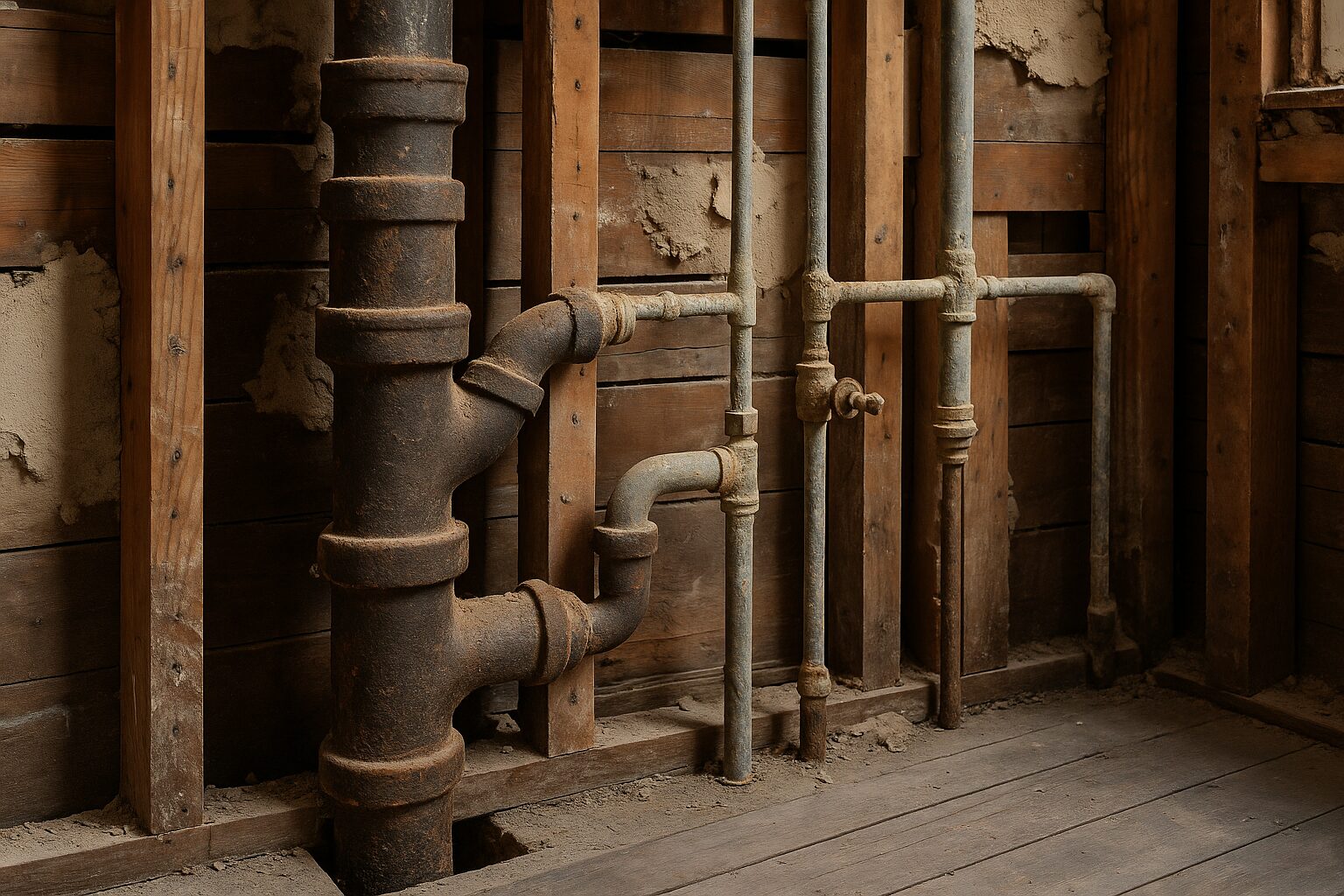
1. The Plumbing Reality: When Original Systems Meet Modern Expectations
The most significant hidden cost in Boston bathroom renovations typically involves plumbing upgrades that become necessary once existing systems are exposed. Many homes in our service area were built between 1890 and 1940, when plumbing standards and materials were vastly different from today’s requirements.
Cast iron drain lines, common in homes built before 1960, often appear functional until renovation work begins. However, these pipes frequently have internal corrosion that restricts water flow, even when external appearance suggests they’re in good condition. We’ve encountered situations where homeowners planned simple fixture updates but discovered that their drain lines needed complete replacement to accommodate modern low-flow toilets and high-efficiency fixtures.
The cost implications can be substantial. Replacing a cast iron drain stack typically ranges from $3,000 to $8,000, depending on accessibility and the extent of replacement needed. In multi-story homes, this work often requires opening walls in multiple rooms to access the full length of the stack. We always recommend having a plumbing assessment conducted before finalizing renovation plans, particularly in homes built before 1950.
Water supply lines present similar challenges. Original galvanized steel pipes, while often still functional, may have reduced internal diameter due to mineral buildup. This can result in poor water pressure to new fixtures, particularly in second-floor bathrooms. Upgrading to modern copper or PEX piping typically adds $2,000 to $5,000 to a bathroom renovation, but the improvement in water pressure and long-term reliability usually justifies the investment.
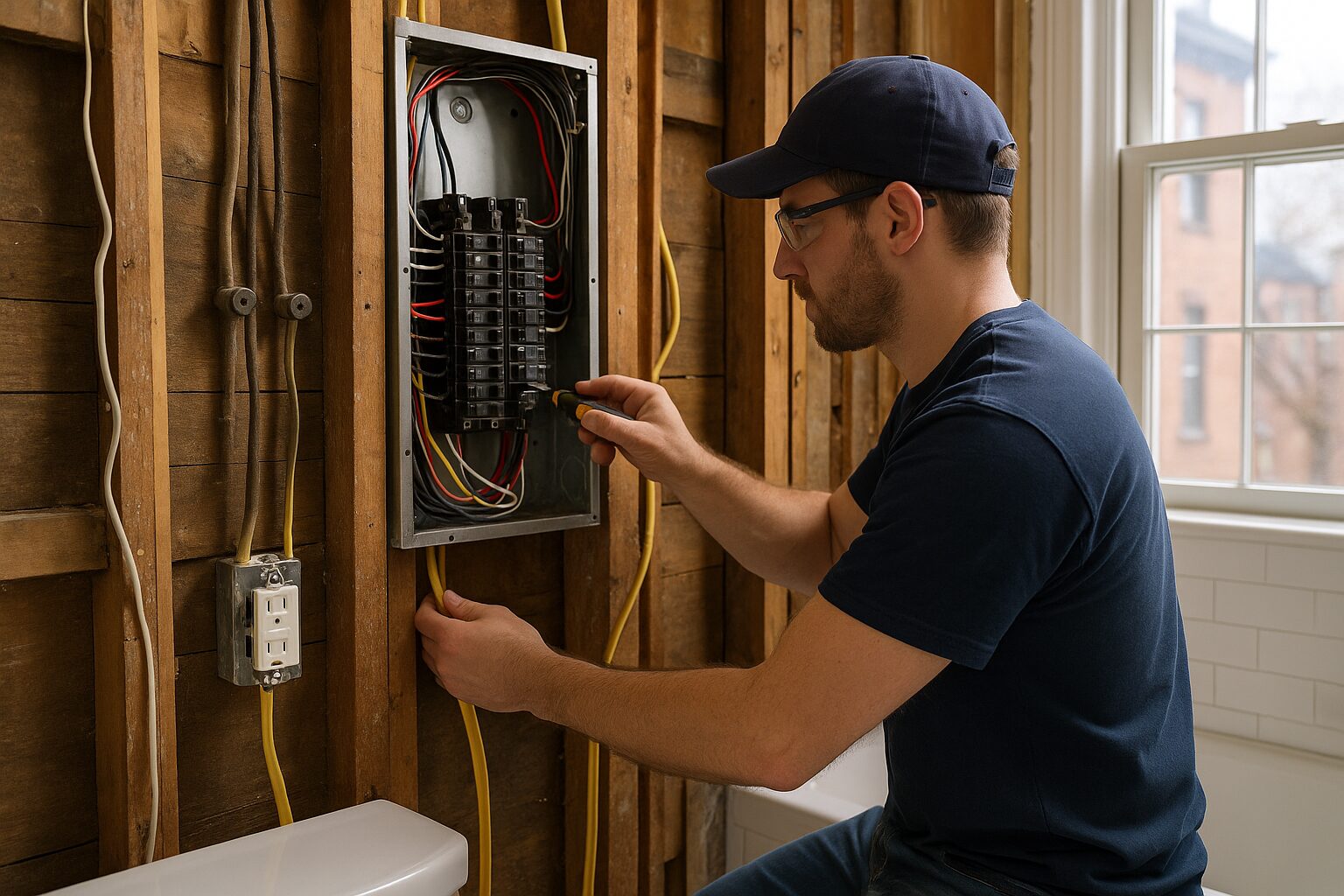
2. Electrical Upgrades: Meeting Modern Safety Standards
Electrical work represents another significant hidden cost category, particularly in homes with original wiring systems. Many Boston-area homes built before 1940 still have knob-and-tube wiring, which, while not inherently dangerous when properly maintained, doesn’t meet current electrical codes for bathroom installations.
Modern bathroom electrical requirements include GFCI protection for all outlets, dedicated circuits for high-draw appliances like heated floors or ventilation fans, and proper grounding for all fixtures. Homes with knob-and-tube wiring lack the grounding conductors required for these safety features. Upgrading bathroom electrical systems in these homes typically requires running new circuits from the main panel, which can add $2,000 to $4,000 to renovation costs.
We’ve also encountered situations where existing electrical panels lack sufficient capacity for modern bathroom amenities. Adding heated floors, multiple high-wattage light fixtures, and powerful ventilation fans can exceed the capacity of older electrical services. Panel upgrades, while not always necessary, can add $3,000 to $6,000 to project costs when required.
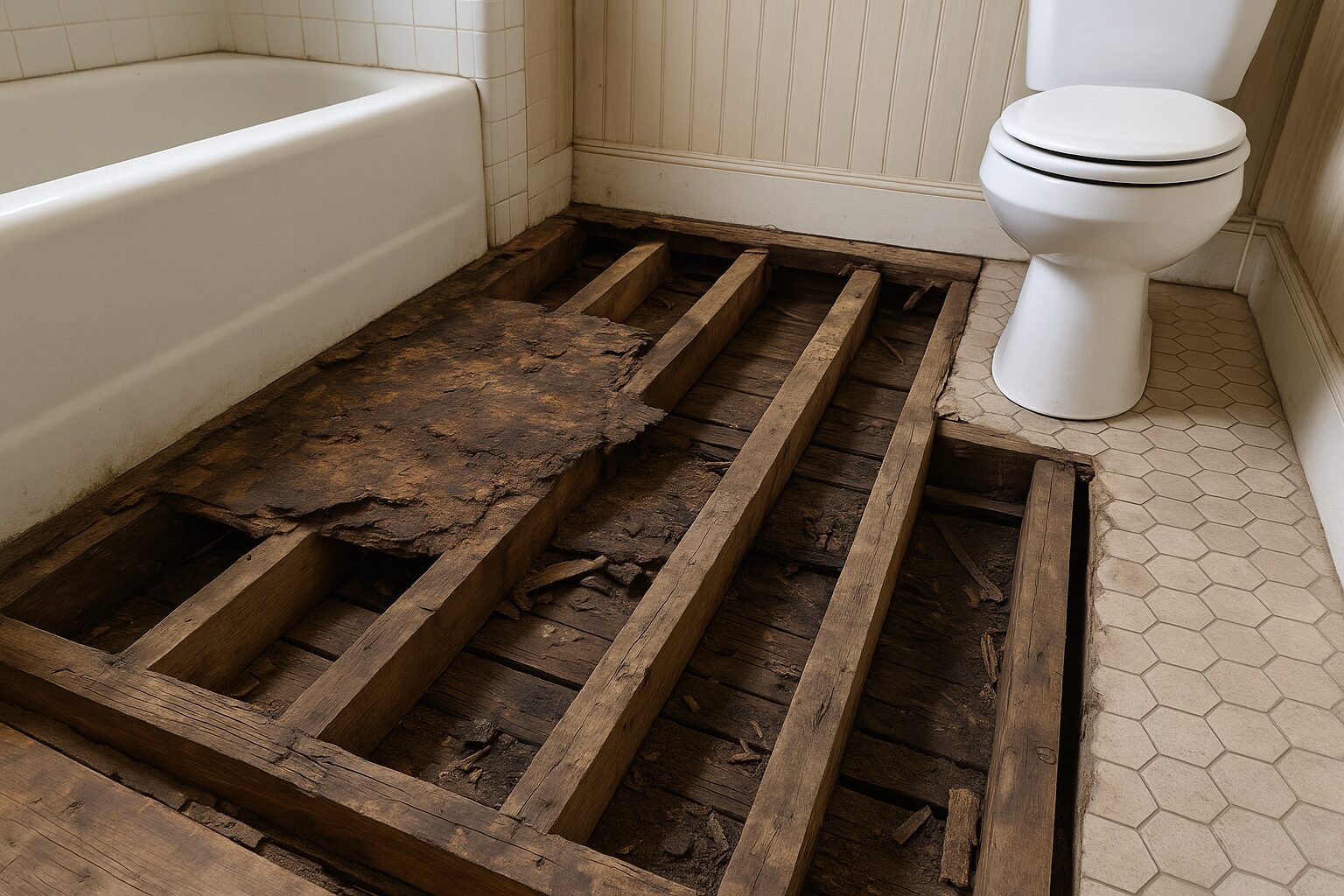
3. Structural Surprises: The Foundation of Renovation Challenges
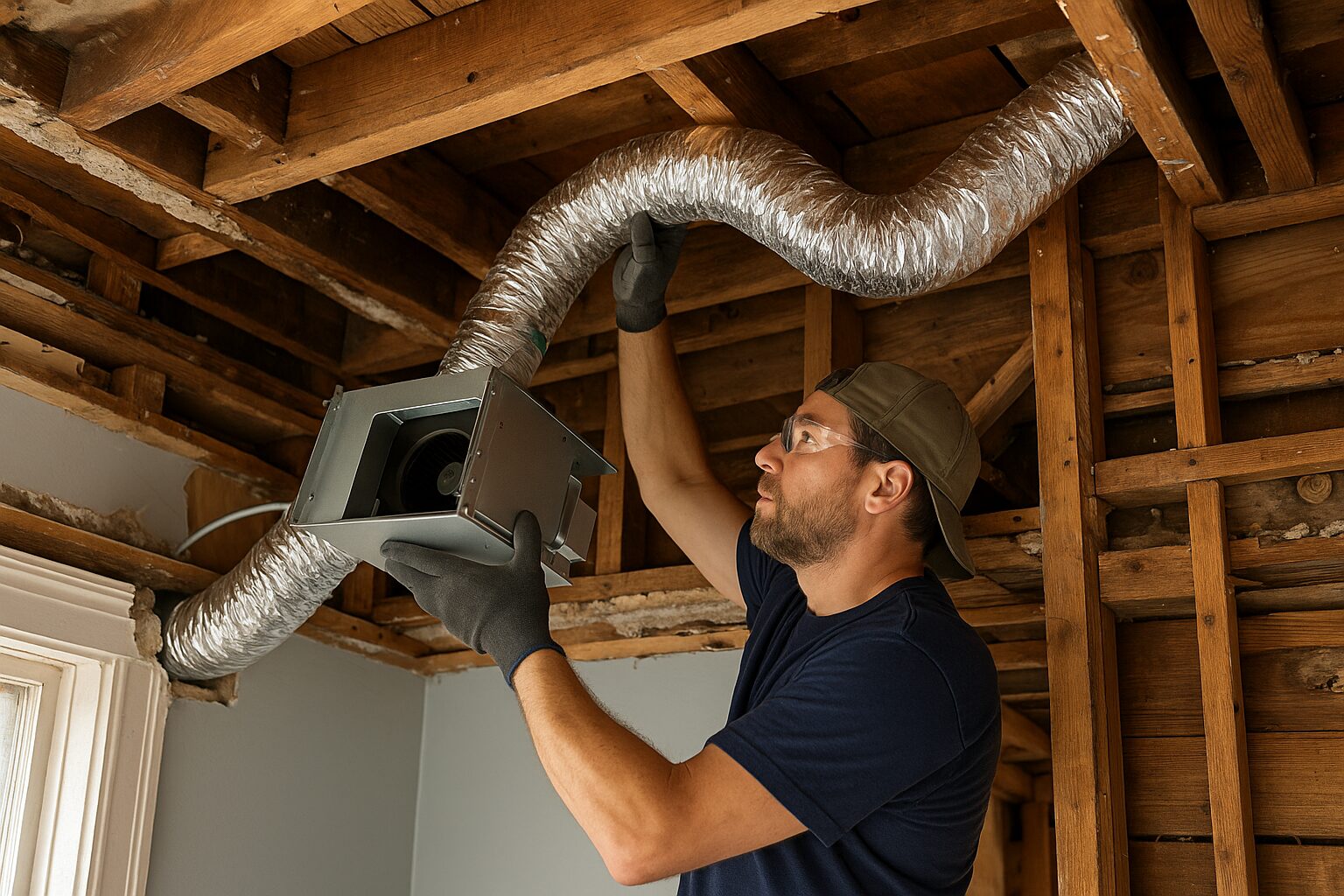
4. The Ventilation Challenge: Addressing Moisture Control in Historic Homes
Proper ventilation represents a critical but often overlooked aspect of bathroom renovations in historic homes. Many older homes lack adequate bathroom ventilation, relying instead on windows for moisture control. While this approach worked when homes were less tightly sealed, modern renovation practices require mechanical ventilation to prevent moisture-related problems.
Installing new ventilation systems in historic homes often requires creative routing solutions. Unlike new construction, where ductwork can be planned during the framing stage, retrofit installations must work around existing structural elements. We frequently encounter situations where the most direct route for exhaust ducting is blocked by structural beams or existing mechanical systems.
The cost of adding proper ventilation typically ranges from $800 to $2,500, depending on the complexity of the installation. However, this investment is crucial for preventing future moisture damage that could cost thousands to repair. We always include ventilation upgrades in our renovation recommendations, even when clients initially plan to rely on existing windows.
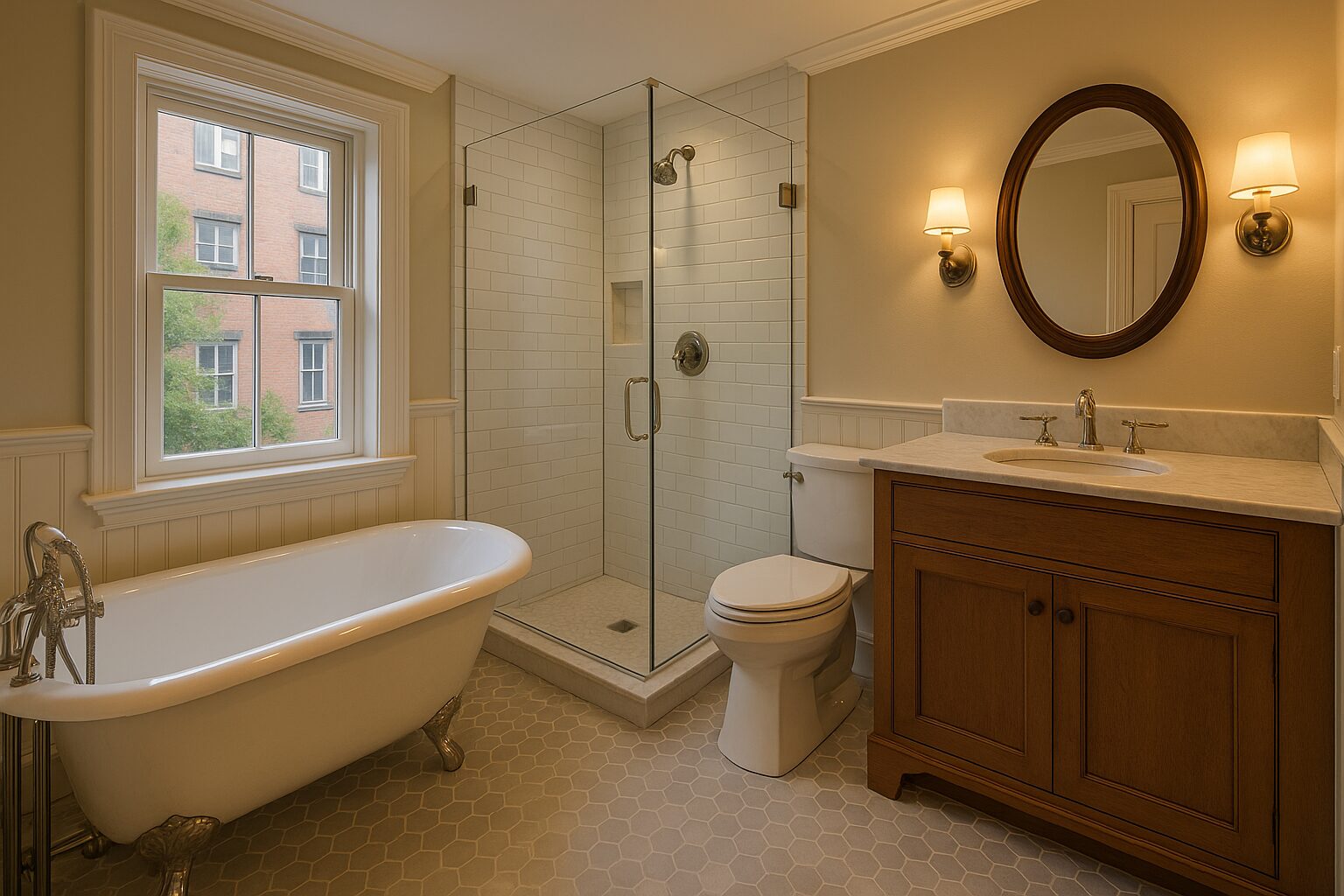
5. Hazardous Materials: The Legacy of Historic Construction
Homes built before 1978 may contain lead paint and asbestos-containing materials, both of which require special handling during renovation work. While not every project encounters these materials, their presence can significantly impact renovation timelines and costs.
Lead paint is particularly common in bathrooms of homes built before 1950, often found in multiple layers beneath more recent paint applications. When lead paint must be disturbed during renovation work, EPA regulations require specific containment and disposal procedures. These requirements can add $1,500 to $4,000 to renovation costs, depending on the extent of lead paint present.
Asbestos-containing materials, while less common in bathrooms, may be present in floor tiles, pipe insulation, or joint compounds. Professional asbestos abatement typically costs $2,000 to $5,000 when required, but this work is essential for occupant safety.
Ready to Plan Your Bathroom Renovation Realistically?
Understanding these potential hidden costs allows you to budget appropriately and avoid unpleasant surprises during your bathroom renovation. Contact Golden Hammer Remodeling today for a comprehensive consultation that includes assessment of your home’s existing conditions and realistic cost projections for your project.
Frequently Asked Questions (FAQ)
1. How can I minimize the risk of hidden costs in my bathroom renovation?
2. Should I budget extra for potential hidden costs?
3. Can hidden costs be covered by homeowner's insurance?
4. How do I know if my home has lead paint or asbestos?
5. Are permits required for bathroom renovations in Boston?
6. How long do bathroom renovations typically take when hidden issues are discovered?
7. Can I live in my home during a bathroom renovation with hidden cost issues?
Blog
Looking for more insights? Explore our blog for expert tips, in-depth guides, and the latest trends.
Keep discovering more content to help you stay ahead!
